WNC Orchard Insect Populations for July 10, 2018
go.ncsu.edu/readext?536405
en Español / em Português
El inglés es el idioma de control de esta página. En la medida en que haya algún conflicto entre la traducción al inglés y la traducción, el inglés prevalece.
Al hacer clic en el enlace de traducción se activa un servicio de traducción gratuito para convertir la página al español. Al igual que con cualquier traducción por Internet, la conversión no es sensible al contexto y puede que no traduzca el texto en su significado original. NC State Extension no garantiza la exactitud del texto traducido. Por favor, tenga en cuenta que algunas aplicaciones y/o servicios pueden no funcionar como se espera cuando se traducen.
Português
Inglês é o idioma de controle desta página. Na medida que haja algum conflito entre o texto original em Inglês e a tradução, o Inglês prevalece.
Ao clicar no link de tradução, um serviço gratuito de tradução será ativado para converter a página para o Português. Como em qualquer tradução pela internet, a conversão não é sensivel ao contexto e pode não ocorrer a tradução para o significado orginal. O serviço de Extensão da Carolina do Norte (NC State Extension) não garante a exatidão do texto traduzido. Por favor, observe que algumas funções ou serviços podem não funcionar como esperado após a tradução.
English
English is the controlling language of this page. To the extent there is any conflict between the English text and the translation, English controls.
Clicking on the translation link activates a free translation service to convert the page to Spanish. As with any Internet translation, the conversion is not context-sensitive and may not translate the text to its original meaning. NC State Extension does not guarantee the accuracy of the translated text. Please note that some applications and/or services may not function as expected when translated.
Collapse ▲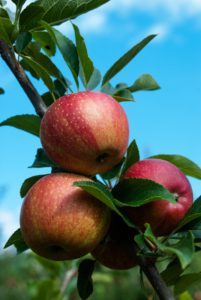 July 10, 2018
July 10, 2018
Codling moth DD accumulations range from about 1480 in Henderson County to 1770 in Lincoln County, indicating that egg hatch of second generation codling moth is beginning in Henderson County and is about 40% complete in lower elevation orchards. Depending on population intensity, one or two applications of an insecticide effective against codling moth are recommended at this time. It should be noted that with a few exceptions, codling moth populations appear to be very low this year. There is minimal damage from the first generation and pheromone trap captures have been very low throughout the year.
In orchards using mating disruption for coding moth, insecticides targeting second generation codling moth are not necessary unless pheromone trap captures (orchard average per trap) exceeds a cumulative of 3 moths per trap over successive weeks when using CML2 or CMDA lures. In orchards that have used mating disruption for more than 3 or 4 years, insecticides are usually not necessary against the second generation. However, pheromone traps should be used to confirm low population pressure.
Emergence of first-generation adult brown marmorated stink bug is now beginning in lower elevation orchards including Lincoln, Cleveland, and Burke Counties. First generation adult emergence in Henderson County is not expected for at least another two weeks.
In orchards where BMSB is a concern, an insecticide effective against this insect should be considered at this time. This includes most pyrethroid insecticides except Asana, the neonicotinoids Venom/Scorpion and Actara (35-day PHI), and the premix Besiege. The premixes Endigo and Voliam Flexi are also effective, but both have a 35-day PHI due to the thiamethoxam component.
Finally, in those orchards that had significant plum curculio damage earlier in the year, emergence of first-generation adults occurs during July. These adults can feed on apples and peaches before seeking overwintering sites. Again, this is primarily a concern where a sufficient number of individuals completed development in fruit, which is usually very low in this region.
Learn more about southeastern apple insect pests at the Apple Insect Management page.
2018 Average Weekly Trap Captures*
| HENDERSON COUNTY | |||
| Insects per trap | |||
| June 25 |
July 2 |
July 9 |
|
| Codling Moth | 0.5 | 0.3 | 1.0 |
| Oriental Fruit Moth | 19.3 | 15.7 | 11.0 |
| Tufted Apple Bud Moth | 0.0 | 0.0 | 0.0 |
| Redbanded Leafroller | 0.0 | 0.0 | 0.0 |
| Obliquebanded Leafroller | 2.0 | 0.0 | 0.0 |
| Lesser Appleworm | 0.0 | 0.0 | 0.0 |
| Apple Maggot | 0.3 | 0.0 | 0.0 |
| Brown Marmorated Stink Bug (commercial – mountains) | 0.4 | 0.3 | 0.2 |
| Brown Marmorated Stink Bug (commercial – upper piedmont) | 0.6 | 1.3 | 2.2 |
| Brown Marmorated Stink Bug (research – unsprayed) | 0.8 | 1.0 | 0.8 |
| Spotted Tentiform Leafminer | 30.0 | 0.0 | 0.0 |
| Dogwood Borer | 48.0 | 20.0 | 23.0 |
| Peachtree Borer | 28.0 | 30.0 | 37.0 |
| Lesser Peachtree Borer | 13.5 | 7.0 | 4.0 |
| San Jose Scale | 0.0 | 2.5 | 17.5 |
*Note that averages presented here are intended only to illustrate the timing of insect emergence and fluctuations in population activity, and not as general indicators of population levels. Some orchards included in these averages have significantly higher or lower populations than most commercial orchards in the area, resulting in averages that are sometimes skewed from what is typical. The only way to have an accurate assessment of an individual orchard’s populations is to set up traps in that orchard.
2018 Accumulated Degree Days
| Henderson County | ||||
| Biofix | June 25 |
July 3 |
July 10 |
|
| Codling Moth | Apr 30 | 1124 | 1323 | 1488 |
| Oriental Fruit Moth | Apr 2 | 1636 | 1876 | 2071 |
| Tufted Apple Bud Moth | May 4 | 1317 | 1556 | 1752 |
| About degree-day models: The degree day (DD) models predict adult emergence and egg hatch of each generation. They do not predict the intensity of populations, which can be assessed by using pheromone traps. Hence, the models should be used to help gauge the time period when control is most likely needed, and pheromone traps provide information on the need for and frequency of insecticide applications. For full details, read “IPM Practices for Selected Pests” in the Orchard Management Guide. |
CODLING MOTH:
|
ORIENTAL FRUIT MOTH:
|
TUFTED APPLE BUD MOTH:
|
2018 Pest Trends (click to enlarge)
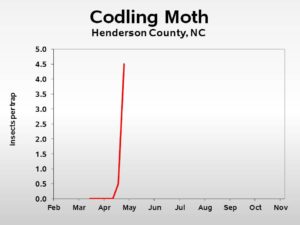 |
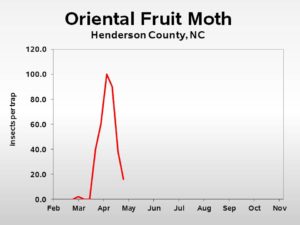 |
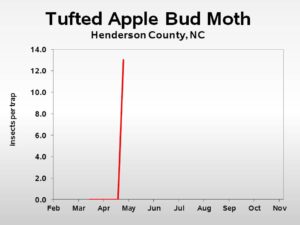 |
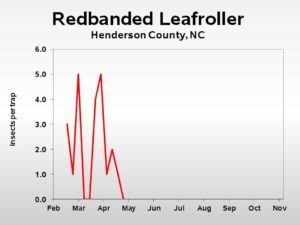 |
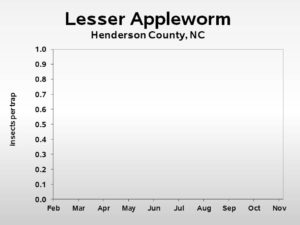 |
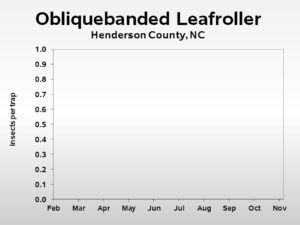 |
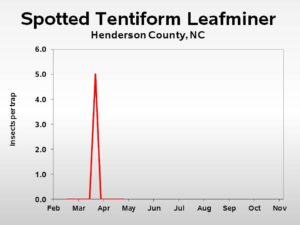 |
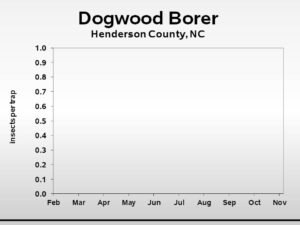 |


